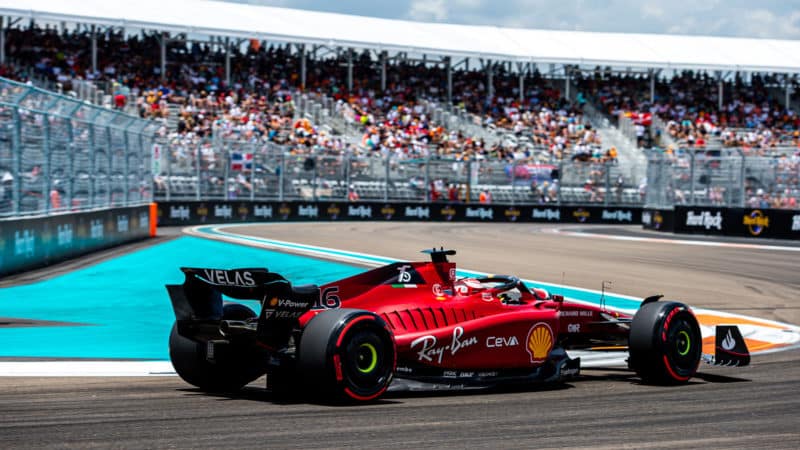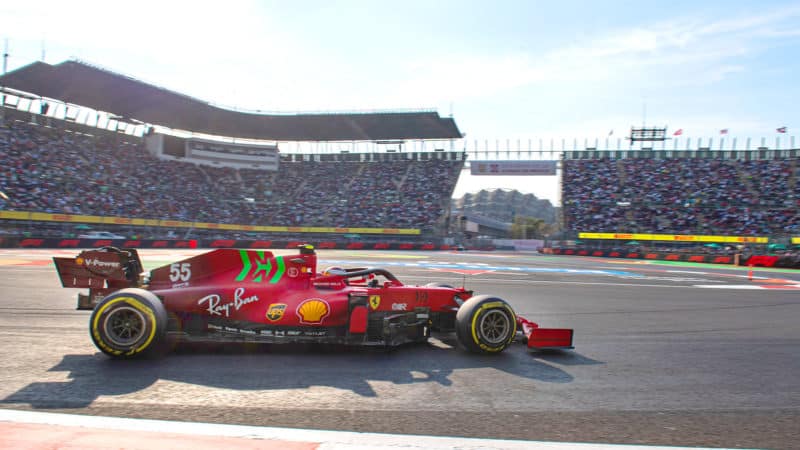That said, F1’s far bigger audience is not at the track, it’s watching on television. And in US terms, it was a roaring success. That’s the market this race is appealing to, and with the ABC broadcast attracting a record 2.6 millions average viewership for the grand prix itself, it’s off to a good start.
Yet that figure, within the context of a population of 330 million, shows how much room for growth there is, and why events like Miami and Vegas are making no apologies for shouting very loudly to try and get into the wider sporting consciousness in America.
Having the race on ABC obviously helped hit a new live record, as did the timezone of course, but the hype also played a big part. You might make it tough to live up to, so it’s a dangerous game to play sometimes, but by creating such a buzz around a race you make people tune in for fear of missing out.
From a racing perspective, far too much focus was on the lack of a battle between Max Verstappen and Charles Leclerc at the front, which owed a lot to Ferrari’s relative struggles on the medium tyre compared to Red Bull. But Verstappen still climbed through from third on the grid with two impressive moves on the Scuderia pair, and what went on further back was actually pretty encouraging.
You can’t judge a track on the performance differences between the teams – favourites like Spa or Suzuka will produce a dull race if there’s a second per lap between each car – but fortunately F1’s midfield is much more closely-matched this year and that was certainly the case in Miami.
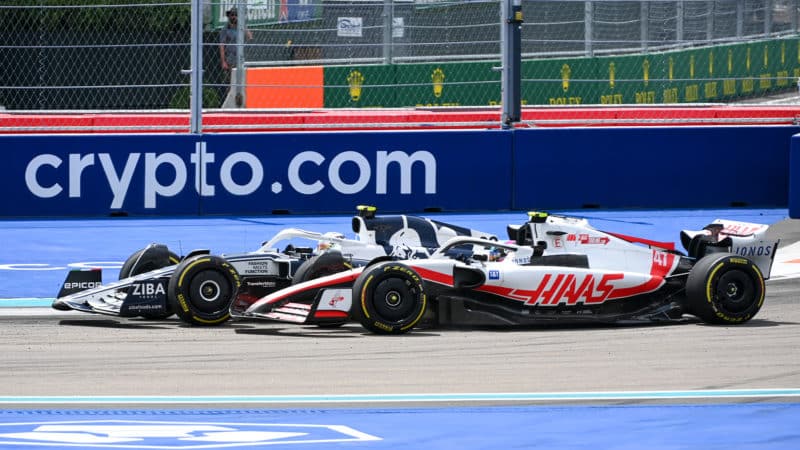
Schumacher passes Tsunoda on the outside of Turn 1
Doug Murray/Icon Sportswire via Getty Images
Sebastian Vettel and Mick Schumacher both pulled excellent overtaking moves at different places on the track – Vettel at Turn 12 on Nicholas Latifi, Schumacher around the outside of Yuki Tsunoda at Turn 1 – before their own coming together at the first corner late on. Kevin Magnussen’s move on Lando Norris at Turn 8 was similarly creative, coming after Vettel had shown a lunge into Turn 17 was also possible on the Dane.
Bar Latifi, all of the above were in an impressive fight for the lower point-paying positions, but because Verstappen had a comfortable eight-second lead at the front for much of the race it was the lack of fight between two drivers that some will define the race by, instead of the exciting one between about seven.
What the fights further back showed is that the track is one that will provide good racing, even if some tweaks might improve it further. It’s not going to rival the greatest circuits in F1, but it’s a good challenge.
The potential is clearly there, just like it is based on the crowd that showed up and audience that tuned in. The next big challenge for Miami is taking that high bar and trying to improve on it next year to keep people as engaged and interest just as high, while for races like Spain it’s finding ways to create their own unique buzz.
If that all improves quality for fans, then it’s a very positive new addition to the calendar.
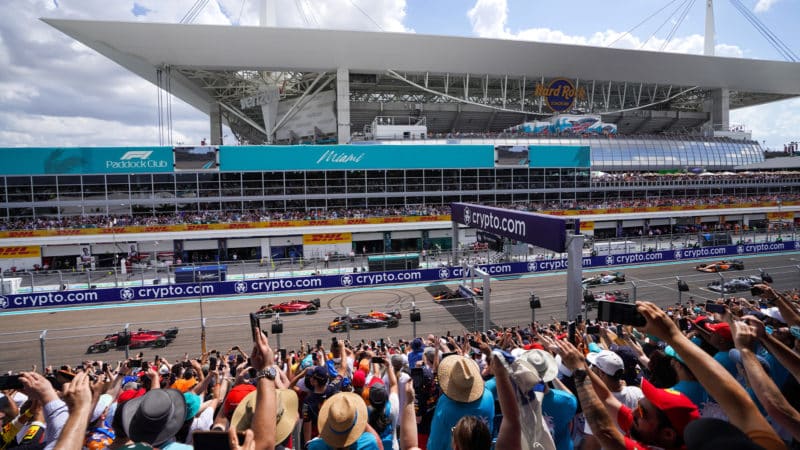
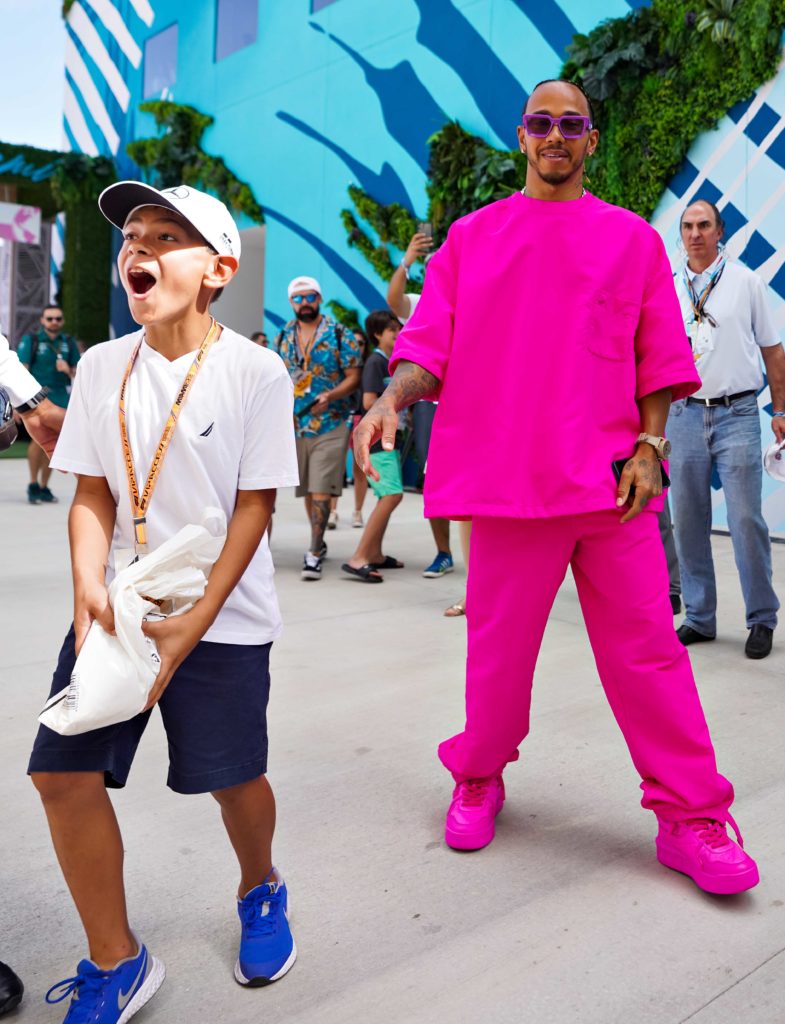 Unless you’re involved in some form of match fixing, nobody can guarantee the quality of the sporting aspect of any event. A football match could be 0-0, it could be 4-4 (and either could be good to watch). A grand prix could be decided at the final corner on the final lap, or be a procession with all drivers performing well enough not to make a significant mistake.
Unless you’re involved in some form of match fixing, nobody can guarantee the quality of the sporting aspect of any event. A football match could be 0-0, it could be 4-4 (and either could be good to watch). A grand prix could be decided at the final corner on the final lap, or be a procession with all drivers performing well enough not to make a significant mistake.